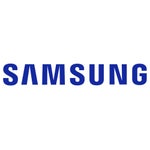News
How to Use the iOS 26.1 Transparency Toggle to Tone Down Liquid Glass
How to Use the iOS 26.1 Transparency Toggle to Tone Down Liquid Glass
The iOS 26 redesign brought the visually striking Liquid Glass interface, but its extensive transparency effects have proven divisive among users. If you find the translucent elements visually overwhelming or detrimental to usability, the new iOS 26.1 transparency toggle provides the perfect solution. This comprehensive guide will show you exactly how to access and use this feature to customize your interface to your preference.
Understanding the Liquid Glass UI Controversy
When Apple launched iOS 26 last month, the Liquid Glass interface represented the most significant visual overhaul in years. Characterized by fluid transparency effects and blurred backgrounds, the design aimed to create depth and modernity. However, the extensive implementation quickly drew mixed reactions.
Many users reported that the transparency effects, while aesthetically fresh, actually impaired usability. The visual complexity made text difficult to read against varying backgrounds, and some users experienced visual fatigue during extended use. The comparison to Windows Vista's controversial Aero glass design wasn't uncommon, highlighting how bold transparency effects can polarize users.
Apple responded to this feedback throughout the beta process, gradually reducing transparency from initial builds. With iOS 26.1, they've taken this customization a step further by putting control directly in users' hands.
Locating and Using the Transparency Toggle
Accessing the Setting
The transparency toggle is conveniently located within iOS's standard settings hierarchy:
-
Open the Settings app on your iPhone or iPad
-
Navigate to Display & Brightness
-
Scroll to find the Transparency option (positioned below Text Size and Bold Text options in current builds)
The setting is available in both iOS 26.1 and iPadOS 26.1 betas, as well as macOS Tahoe 26.1, maintaining consistency across Apple's ecosystem.
Understanding Your Options
Unlike a granular slider, the transparency toggle presents two distinct visual modes:
Clear Mode (Default)
-
Maintains the original Liquid Glass transparency effects
-
Provides the full visual experience as intended by Apple's design team
-
Offers the complete depth effect through blurred backgrounds and translucent elements
Tinted Mode (New)
-
Increases opacity of transparent interface elements
-
Adds additional contrast to improve readability
-
Reduces visual complexity while maintaining the Liquid Glass aesthetic
-
Particularly beneficial for users with visual sensitivities or those who prefer cleaner interfaces
Why This Feature Matters for User Experience
The introduction of dedicated transparency control addresses several critical aspects of modern interface design:
Accessibility Benefits
For users with visual impairments, contrast sensitivity, or certain types of color blindness, the reduced transparency can significantly improve usability. The higher opacity creates more consistent backgrounds, making text and interface elements stand out more clearly. Users looking to further enhance their experience can explore Apple’s built-in accessibility features for even more customization options.
Performance Considerations
While Apple hasn't officially confirmed performance implications, interface transparency effects typically require additional GPU resources. On older devices, switching to Tinted mode may provide slight performance improvements, particularly during intensive multitasking or animation-heavy operations.
Personalization Philosophy
This feature represents Apple's continued shift toward greater user customization while maintaining their design vision. By offering options rather than mandates, Apple acknowledges that visual preferences vary significantly across their diverse user base.
Beyond the Toggle: Additional Liquid Glass Customization
While the transparency toggle addresses the most common complaint about Liquid Glass, several complementary settings can further refine your experience:
Reduce Motion
Found in Accessibility > Motion, this setting minimizes interface animations that may combine problematically with transparency effects.
Increase Contrast
The Accessibility > Display & Text Size > Increase Contrast option works synergistically with the Tinted transparency setting to maximize legibility.
Dark Mode Synergy
The transparency effects behave differently in Dark Mode. Many users find that combining Dark Mode with the Tinted setting creates the most comfortable viewing experience in low-light conditions.
What's New Since the Initial Beta
Since the feature's introduction in early beta builds, Apple has made several subtle refinements:
-
The toggle has been repositioned for better discoverability
-
Visual feedback when switching between modes has been improved
-
The Tinted mode now offers slightly more opacity in the latest beta versions (26.1 beta 3 and later)
-
macOS Tahoe implementation now matches the iOS behavior exactly
Industry sources suggest the final iOS 26.1 release is scheduled for late November 2025, bringing this feature to all users ahead of the holiday season.
Expert Recommendations for Optimal Settings
Based on testing across different user profiles and device types:
For Productivity Focused Users
Enable Tinted mode to reduce visual distractions during extended work sessions. The cleaner interface promotes focus on content rather than interface elements.
For Users with Older Devices
The Tinted mode may provide slightly better performance on iPhone 14 models and earlier, though the difference is marginal on iPhone 15 and newer.
For Accessibility Needs
Combine Tinted transparency with Bold Text and Increased Contrast for the most legible interface configuration.
For Design Purists
If you appreciate Apple's original vision and don't experience usability issues, the Clear mode maintains the complete Liquid Glass aesthetic.
Troubleshooting Common Issues
Some beta users have reported minor issues with the transparency toggle:
-
Setting Not Appearing: Ensure you're running iOS 26.1 beta 2 or later
-
Visual Glitches: Restart your device after changing transparency settings
-
Inconsistent Application: Some third-party apps may not fully respect the setting until developers update their interfaces
The Future of Interface Customization at Apple
The transparency toggle represents part of a broader trend at Apple toward user-configurable interfaces. Industry analysts predict future iOS updates may expand customization options further, potentially including:
-
Granular control over transparency levels
-
Per-app transparency settings
-
Time-based automation (similar to Night Shift)
-
Additional visual style options beyond the current binary choice
Conclusion: Taking Control of Your Visual Experience
The iOS 26.1 transparency toggle finally gives users agency over one of iOS 26's most contentious design choices. Whether you need reduced transparency for accessibility reasons, performance benefits, or simply personal preference, the feature delivers a straightforward solution.
The setting's simple binary approach makes customization accessible to all users while effectively addressing the core usability concerns raised about Liquid Glass. As we approach the final iOS 26.1 release, this feature stands out as a meaningful quality-of-life improvement that demonstrates Apple's responsiveness to user feedback.
For those currently using the beta, the transparency toggle is available immediately. For everyone else, the wait until the public release later this month will be well worth it for anyone who found Liquid Glass's transparency effects overwhelming.
Related Articles
-
iOS 26 Beta 2 Brings Liquid Glass Refinements and New Accessibility Features
-
What’s New in iOS 18.5: Satellite Messaging, Screen Time Updates, and More












